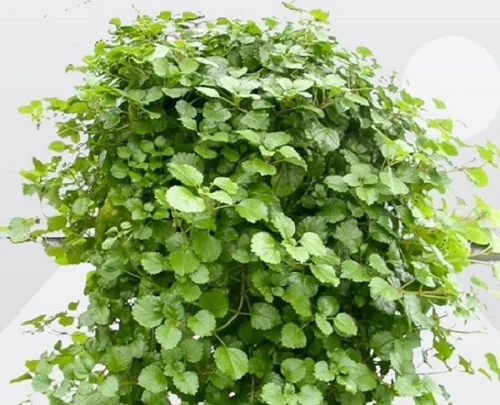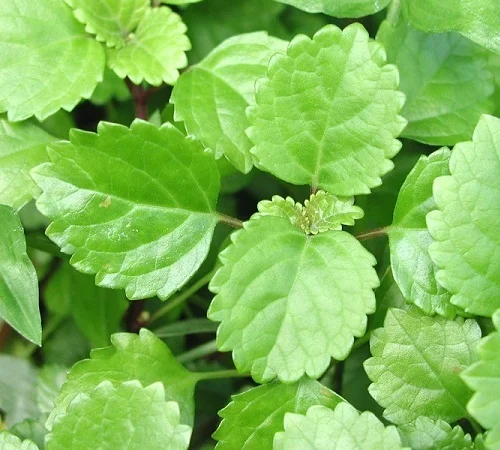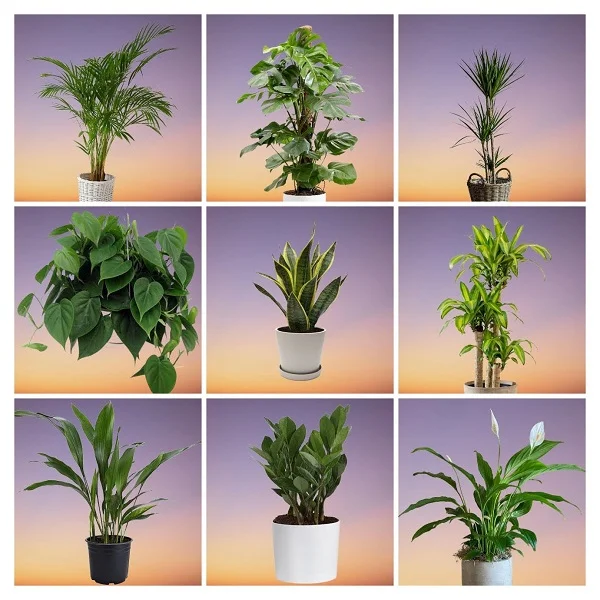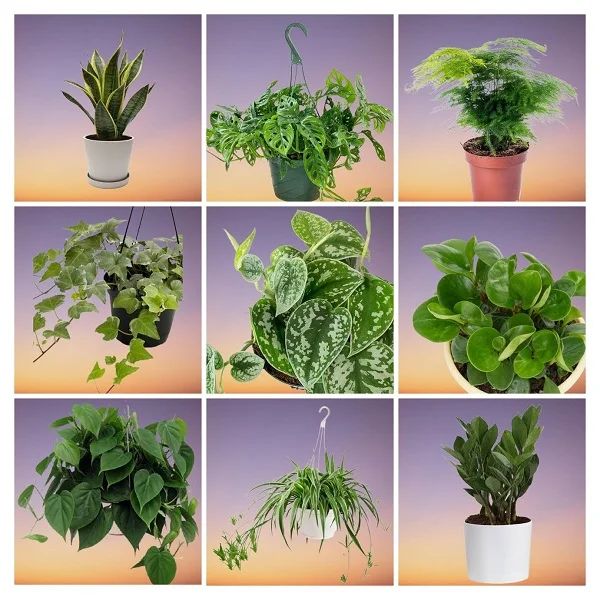Whorled Plectranthus (Swedish Ivy) Indoor Care, Propagation and Growing Problems
Some links in this post may be affiliate links
Whorled Plectranthus (Swedish Ivy) requires bright indirect light, warm and moderately humid conditions and moderately moist, rich, well-drained soil coupled with monthly feeding in the growing period.
Whorled Plectranthus also called Swedish Begonia, Gossip Plant or Begonia Ivy are creeping plants important for clothing the edges of pots and hanging baskets.
Swedish Begonia is easy to grow even for a beginner and will withstand occasional dryness at the roots. It will also produce occasional flowers under room conditions.
Though called Swedish Ivy, it is not a true ivy and will flourish in dry air where true ivies would fail. Despite the name 'Ivy', the leaves resemble a small and plain Coleus rather than a colorful Ivy.
The foliage in Whorled Plectranthus is more colorful and the trailing stems are covered by foliage and they grow very fast. The leaves are more rounded and deeply veined.
The common name, 'Swedish Ivy' indicates their popularity in Scandinavia where they are grown in hanging baskets or on window-sills. Plectranthus are some of the best plants for a hanging basket.

Botanical name: Plectranthus
Family: Lamiaceae
Common names: Gossip Plant, Begonia Ivy, Swedish Ivy, Swedish Begonia, Whorled Plectranthus, Spurflowers
Origin
The Plectranthus genus has about 350 species comprising of warm-climate plants occurring largerly in the Southern Hemisphere, in Sub-Saharan Africa, Madagascar, India and the Indonesian archipelago down to Australia and some Pacific Islands.
Varieties
The variegated types are more popular like Plectranthus oertendahlii is especially colorful with leaves measuring 1 inch across, prominnent white veins, underside and leaf edge rosy-purple.
Plectranthus coleoides marginatus bears the largest leaves which measure 2-2.5 inches wide, have a broad white edge and a hairy surface. Plectranthus australis bears all-green leaves which are thicker and glossier than for other species.
Plectranthus are closely related to Coleus blumei (Painted Nettle). The Plectranthus plants are also known as spurflowers.
Toxicity
Swedish Ivy is non-toxic to both humans and pets. They are safe to grow in a home where the are children and or pets.
Where to Buy
Swedish Begonia are magnificent plants for any plant collection. You may acquire these plants from Etsy (Link to Etsy).
Whorled Plectranthus Care Indoors
Whorled Plectranthus flourishes in bright indirect light (filtered light), average warmth of 16-280C, moderate humidity of 50-55% and moderately moist, fertile, well-drained, all purpose soil coupled with monthly feeding during the growing season.
Swedish Ivy requires repotting only when it becomes pot-bound. Regular pruning is needed to keep it neat, encourage a bushy, compact growth and rejuvenate growth. Keep reading for more on these growing conditions and how to provide them.

Light Requirements
Whorled Plectranthus grows best in bright indirect light. Keep it away from direct sunlight to prevent scorching of the leaves.
It can be grown under a grow light where the natural light is inadequate. Check out these full spectrum grow lights on Amazon.
Rotate the pot regularly to ensure that the plant receives light on all sides for uniform growth and prevent legginess.
Watering
Water Whorled Plectranthus liberally during the growing season and allow the top 2 inches of soil to dry out between waterings to keep the soil moderately moist.
Decrease watering for Swedish Ivy during the cold season to maintain the soil slightly moist as growth is minimal at this time but do not allow the soil to dry out completely.
Avoid soggy soil as it can lead to root-rot which can result in the death of the plant. Make sure that the pot has a drainage hole to prevent the soil from getting soggy (too wet) to avoid rotting.
Temperature and Humidity
The best temperature for Whorled Plectranthus is an average warmth of 16-280C. Keep it away from drafts to prevent sudden changes in temperature as it can lead to leaf drop and reduced growth.
Average humidity of 50-55% is ideal for Whorled Plectranthus. Where the air is too dry, set the pot on a wet pebble tray or use a cool mist humidifier to raise humidity.
Occasionally wash the leaves with plenty of water to get rid of dust and discourage pest infestation. Make sure that there is good ventilation to prevent fungal diseases.
Potting Soil
The best soil for Whorled Plectranthus should be rich in organic matter and free-draining to prevent it from getting soggy while providing the required nutrients. All purpose potting mixes are ideal for the plant.
Fertilizer
Feed Whorled Plectranthus with a balanced water-soluble fertilizer every 4 weeks during the growing period for lush growth. Stop feeding in the cold season as growth is minimal and feeding at this time may lead to fertilizer burn.
Repotting
Repot Whorled Plectranthus during the growing season only when the plant has become pot-bound. Ensure that the pot has a drainage hole to prevent the soil from getting soggy as it can lead to root-rot. Take a look at these pots with drainage holes on Amazon.
Pruning
Pruning Whorled Plectranthus is easy. To control the height of the plant and encourage a bushy, compact plant, pinch the growing tips. Remove dead flower stalks immediately to keep it neat and to reduce the breeding ground for pests and diseases. Cutback the overgrown or leggy plant to rejuvenate growth.
Propagation
Whorled Plectranthus (Swedish Ivy) propagation can be done at the beginning of the growing season from stem-tip cuttings.
How to propagate Whorled Plectranthus from stem-tip cuttings
Take a 4-6 inches stem-tip cutting from a healthy Whorled Plectranthus. Strip off the lower leaves and insert the cutting in moist rooting soil.
Place the set up in a warm, well-lit place away from direct sunlight and maintain the soil moist until new growth emerges.
Allow the Swedish Ivy to be well established before transplanting after which you can begin routine care.

Whorled Plectranthus Problems with Remedies
Whorled Plectranthus (Swedish Ivy) growing problems include wilting, dull leaves, yellow leaves, leggy growth, pests and diseases among others. Keep reading for more on these problems, their remedies and solutions.
Diseases
Whorled Plectranthus is prone to leaf spot disease which is prevalent in humid conditions coupled with poor air circulation.
Isolate the affected plant to prevent spread to other plants and treat it appropriately for the disease. Improve ventilation to discourage the occurence of the disease.
Pests
The common pests in Whorled Plectranthus are mealy bugs, scale insects, aphids, whiteflies and spider mites. Isolate the affected plant to prevent spread to other plants and treat it for the pests. Learn how to identify and treat pests in houseplants.
Wilting despite regular watering
Wilting in Whorled Plectranthus despite regular watering is an indication of root-rot which is promoted by soggy soil brought about by poor drainage
Isolate the affected plant, take stem-tip cuttings and propagate a new plant. Discard the diseased plant as it will not recover. To avoid this problem in the future, ensure that the pot has a drainage hole and that the soil drains easily to prevent it from getting soggy.
Leggy growth
Leggy growth in Whorled Plectranthus is caused by too little light This is an attempt by the plant to reach the light source. Move the plant to a brighter spot where it will receive bright indirect light or instal grow lights if natural light is not enough.
Regularly turn the pot to ensure that the plant receives light on all sides for uniform growth as well as prevent leggy growth. Check out this guide on understanding light for houseplants.
Soft and dull leaves
Soft and dull leaves in Whorled Plectranthus are due to underwatering. Water the plant immediately, maintain the soil moderately moist at all times during the growing season. Cut down on watering in the cold season but never allow the soil to dry out completely. Learn more on how to water houseplants correctly.
Yellowing leaves
Overwatering or soggy soil are the cause of yellowing leaves in Whorled Plectranthus. Lessen watering in the cold season and ensure that the pot has a drainage hole and that the soil drains easily to prevent it from getting soggy.
You liked it? Share on social media.
Related Content
Amazon Associates Disclosure
Homeplantsguide.com is a participant in the Amazon Services LLC Associates Program, an affiliate advertising program designed to provide a means for sites to earn advertising fees by advertising and linking to amazon.com.





